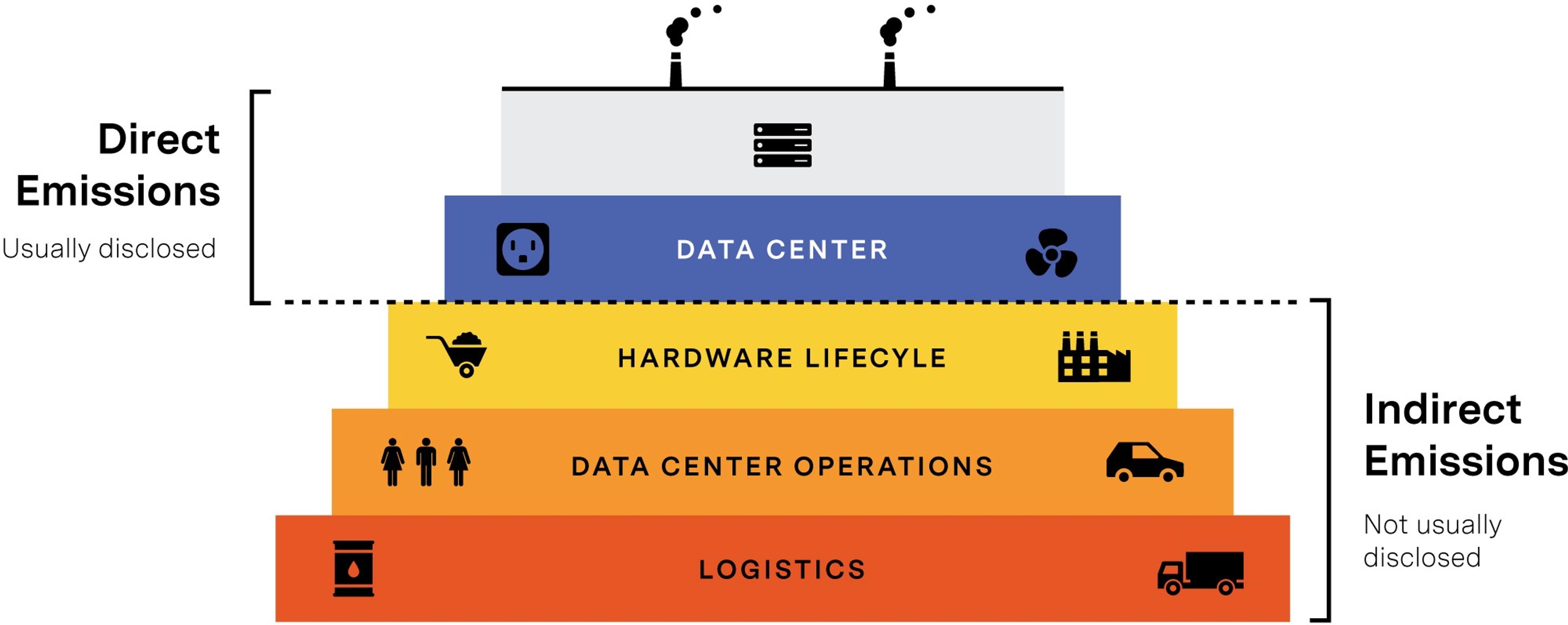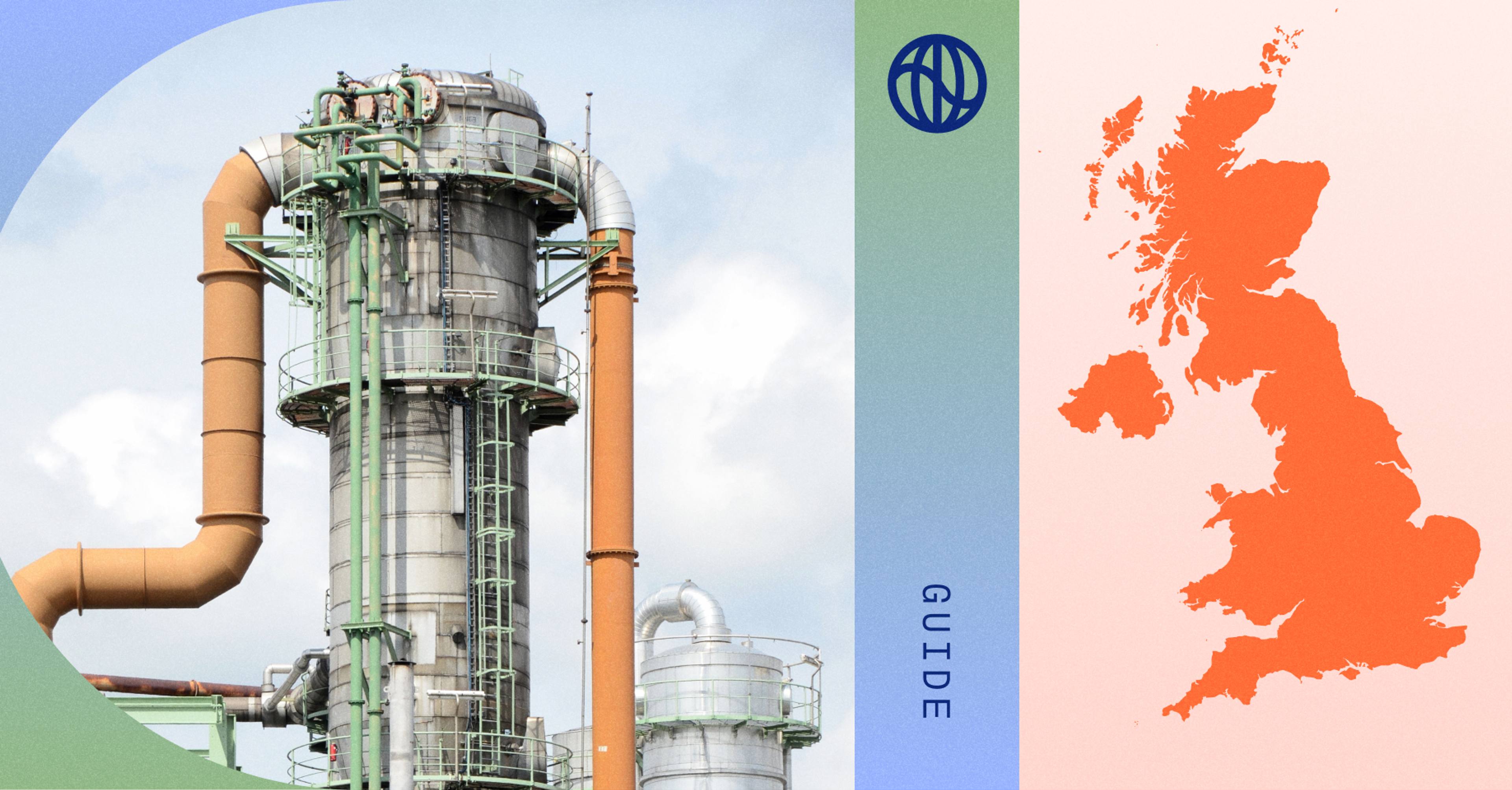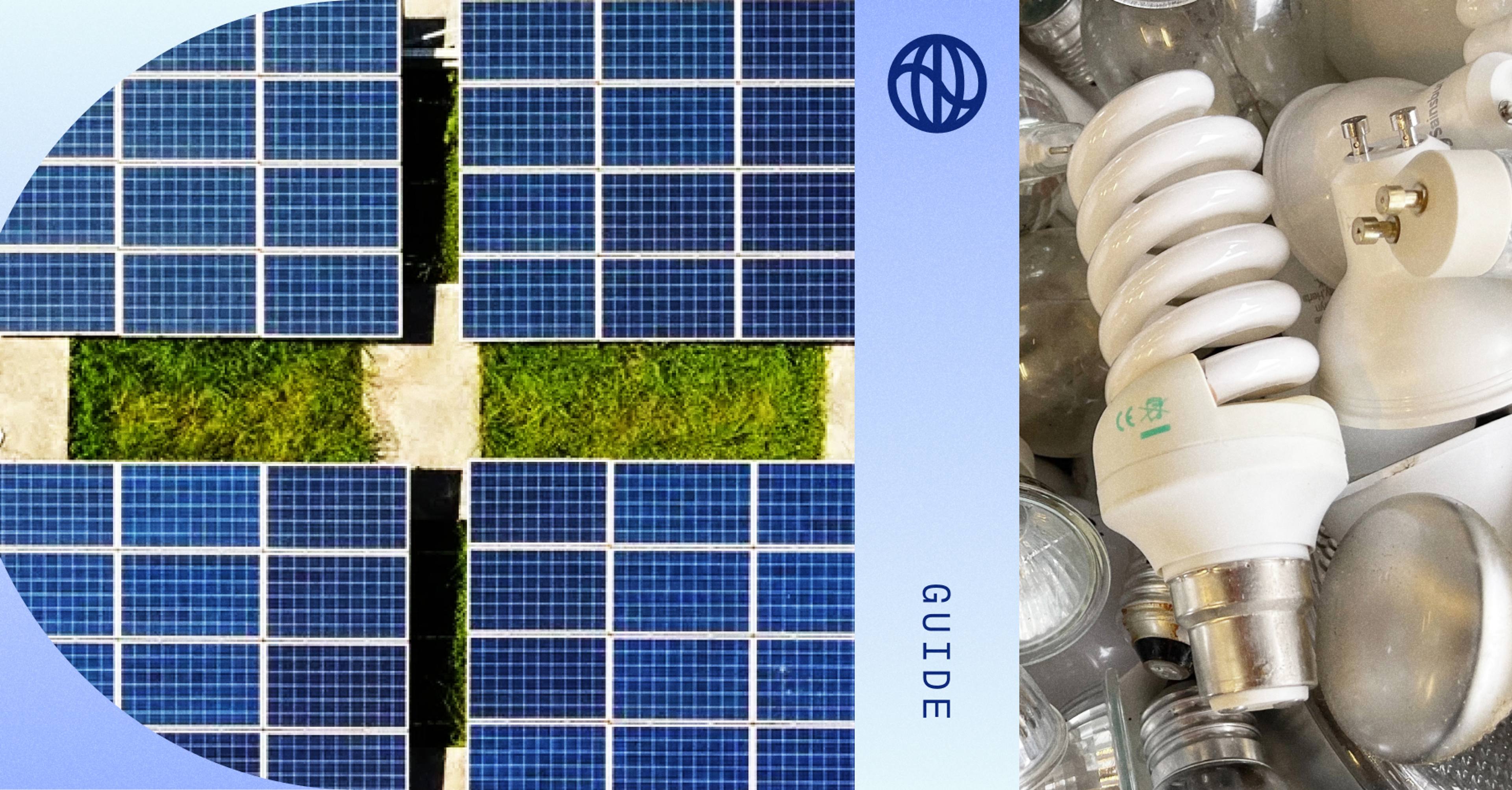Cloud computing and data centers have become core global infrastructure—the roads and bridges of the internet economy. But they’ve also become a significant driver of carbon emissions, responsible for an estimated 1.8% of US electricity consumption and the plurality of emissions for many tech companies.
The good news is that cloud giants like Google and Microsoft have become some of the world’s largest purchasers of clean power, accelerating the deployment of zero-carbon electricity. The bad news is that not all cloud providers have been as bold, and the true carbon cost of cloud computing is still opaque for most companies.
Watershed helps many of the world’s fastest-growing technology companies—like Stripe and Shopify—cut their emissions, including from cloud operations. In this guide, we’re sharing what we’ve learned about calculating emissions from cloud providers and data centers, and about how to drive those emissions to zero.
Data centers and carbon emissions
Technology companies run on data centers: sprawling facilities that house servers that store and process the information that makes up the internet. And it’s not just the tech industry: virtually all internet-era companies have growing needs for computing, hosted services, storage, and networking capacity. There are now millions of data centers globally, split across three basic operational structures:
- Some companies build and manage their own facilities
- Some buy their own equipment and co-locate it with a partner like Equinix (referred to as a “colo”)
- Some use a cloud service provider like Amazon Web Services (AWS), Google Cloud, or Microsoft Azure to fully manage their cloud
Each of these structures drives significant carbon emissions—both directly (from electricity consumption) and indirectly (e.g., from extracting and shipping the raw materials used to manufacture servers). But the scale of these emissions has long gone underreported. Until a few years ago, very few cloud customers had the means of measuring, understanding, or managing their true contributions.
At Watershed, we’ve worked with experts to develop a methodology for counting these emissions—down to narrow particulars like instance type, chip brand, cloud provider, and geographic region. (We’ve drawn on excellent academic work by Arman Shehabi, Jonathan Koomey and others.) We’re sharing our high-level approach here.
What causes emissions of data centres?
The first step is to make sure you’re capturing all emissions. We think about emissions in two categories: the “direct” emissions from the electricity necessary to operate a data center, and the “indirect” emissions from manufacturing hardware and other operations to deliver cloud services.

The GHG Protocol and cloud
The Greenhouse Gas Protocol—i.e., the equivalent of GAAP for carbon accounting— divides emissions into three “scopes”:
- Scope 1 - Greenhouse gases directly emitted by facilities you own (e.g., burning gas to power your car or office)
- Scope 2 - Emissions from electricity you purchase
- Scope 3 - Everything else: carbon emitted upstream (by your suppliers) and downstream (by your customers)
These scopes are relative. If you own a data center, the electricity it consumes is Scope 2, and the emissions from the manufacturing of the underlying hardware are Scope 3. If you’re a colo tenant, the electricity used to power your hardware would be Scope 2, but the electricity used to power the broader facility would be Scope 3. If you’re using a cloud provider, everything is Scope 3— i.e., by far the largest and most underreported category.
Direct emissions
We’ve used industry research and the academic literature to develop a formula for data center emissions specifically:

Breaking those variables down:
- Electricity consumed by machines. Servers and drives need electricity to operate. If you operate your own data center, measuring this demand is as easy as checking your electricity bill. If you work with a colo like Equinix, you may be able to ask for a report on electricity consumed by the hardware you own. If you use a cloud provider like AWS though, this gets tricky fast, as most don’t typically share detail on just your usage. Watershed estimates the watts per vCPU for each instance type, drawing from published research on energy consumption per vCPU for different chip brands and standard assumptions on utilization rates. Our carbon data engine then multiplies this estimate against the instance usage recorded on your cloud bill to calculate total consumption. (We also make similar estimates for electricity consumed for storage, networking, and other cloud services.)
- Power usage effectiveness (PUE). Beyond the hardware devices, energy is also needed to run the overall data center facility—e.g., lighting, cooling, and support functions. The industry measures this overhead consumption in a multiplier termed “power usage effectiveness”, or PUE. For example, a data center with a PUE of 1.5 uses .5 kWh for facility overhead for every 1 kWh used by data center hardware. For self-operated centers, there may be one combined electricity bill where no multiplier is needed. Larger cloud providers will often advertise PUE directly: most Google centers have an industry-leading PUE of 1.1 (see here for an excellent explainer on their approach), while Equinix reports a PUE of 1.5. For providers that don’t list PUE (like AWS), we use estimates from academic literature.
- Carbon intensity. Emissions by energy type vary dramatically. Coal-fired plants are killing us; solar arrays aren’t. Yet colos and cloud providers still use an unhelpfully broad energy mix, and aren’t always transparent about it. Where providers disclose their clean power purchases in a detailed and transparent way (as Microsoft and Google have), we give them credit for zero-carbon electricity. If a provider isn’t clear about their clean power, we use the carbon intensity of the local electricity grid.
- Carbon dioxide equivalent (CO2e). The total emissions from data center electricity consumption.
Indirect emissions
Electricity consumption isn’t the only driver of cloud emissions. Data centers and cloud providers emit carbon at every other step of their operations—from manufacturing all the servers and racks to taking business-class flights to close new clients.
True all-in accounting (i.e., inclusive of Scope 3 emissions) must take a much broader picture:
- Hardware. Servers are the final state of twenty or so raw materials, each of which needs to be extracted, processed, and transformed—often involving multiple physical journeys. The end product then needs to be disposed of after its useful life. While some suppliers track all this as part of a formal Life Cycle Assessment (LCA), many suppliers don’t publish anything definite, forcing reliance on industry averages. If you buy your own hardware, you can calculate emissions based on the LCA of specific servers you purchase, or by using spend-based estimates. (Watershed handles this step for customers.) If you’re a cloud customer, Watershed estimates this category by working backward from public reports about how much cloud providers emit per dollar in revenue.

- Operations. Data centers are staffed by workers who drive to work, and are visited by consultants and executives who fly in and then rent cars and hotels for their stay. Those emissions count, as do those from the goods, services, and infrastructure that support daily operations—e.g., catering, on-site amenities, and parking lot repairs. Watershed estimates this category by working backward from public reports about how much cloud providers emit per dollar in revenue.
How to reduce your Cloud Carbon Footprint?
Once you know your cloud emissions, there are three things you can do to accelerate the shift towards a zero-carbon cloud:
1. Deploy clean electricity for direct emissions
Data centers alone currently use ~1.8% of US electricity, all of which should be powered by renewables. And this can happen imminently if cloud clients use their leverage effectively.
If you operate your own data center, this is easy enough: buy clean power for it. Buy lots of it, in advance, in a way that actually drives incremental new clean power into the grid. Not only will you be avoiding new emissions, but you’ll be advancing the development of clean energy itself, making it cheaper and more plentiful for the next buyer.
If you aren’t in a position to negotiate with energy suppliers directly, you can still favor cloud providers who can do that for you at scale. We commend both Google and Microsoft for their leadership here, both in having aggressive 2030 goals and in funneling massive amounts of cash into the renewables flywheel.
If you’re using a provider that has yet to hit 100% clean power (like AWS), make your interests clear: they can move faster to deploy renewables, or they can risk losing you at renewal. This positive pressure helps. And if you’re with a provider that still has dirty facilities online, take the time to look at the carbon variance between their regions and insist on favoring the cleanest ones.
2. Insist on transparency
One high-leverage way to drive impact is to demand that providers and their suppliers at least report their emissions in detail (including Scope 3). While Microsoft is leading here with the emissions calculator they’ve built into Azure, other providers will follow suit faster if their customers make it known that not doing so is a dealbreaker.
3. Push for true net zero
The world needs to get to net zero by 2050 to beat climate change. Every company’s actions matter here, both independently and in the effects they have on partners and competitors.
True net zero requires us to measure all emissions (both direct and indirect), to work with suppliers to reduce what they can, and to fund permanent carbon removal for whatever remains. (We’ve written more about the details of net zero previously.)
For cloud and data centers, this means going a step further than just deploying clean electricity to eliminate direct emissions. Companies also need to zero out their indirect emissions—from manufacturing hardware, and every other part of the chain.
If you operate your own data center, work with hardware vendors that have set their own net zero targets. If you use a cloud provider like AWS, push them to set their own net zero target, and to get there fast (Amazon has set a target of getting to net zero by 2040). All of these companies should push to get there by 2030 at the latest. Bringing the timeline forward is meaningful.
You can also take matters into your own hands by directly funding carbon removal for your data center emissions, starting today. Price your cloud usage with a true net zero surcharge and direct those funds to cutting edge projects. (Watershed can help with this, too.)
Data centers are just one emissions source, even for pure tech companies. But they’re a significant part of overall emissions, where those emissions don’t need to happen. Our usage can instead support climate solutions if we choose thoughtfully.
We hope this guide has given you some context on how to drive towards a net-zero carbon cloud. If we can help, please get in touch.












